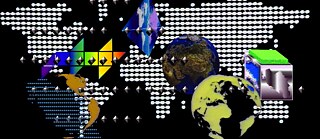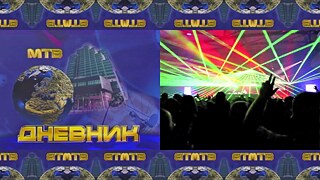Aleksandra Domanović
Exhibition "Techno Worlds"
By a coincidence of history, widespread internet use came on the heels of socialism’s collapse in Eastern Europe. Routes of global commerce multiplied in parallel with the speed of information. From today’s standpoint, a world where capitalism and socialism coexisted is associated with rhythms of life defined by slower forms of media.
Aleksandra Domanović considers this condition through her own experience and the history of her native Yugoslavia in 19:30 (2010). The title comes from the time slot of the Yugoslav nightly news, when the whole country would take time to view the broadcast. Watching the news became even more important to the daily routine as ethnic tensions mounted in the late 1980s, but that routine, like many other unifying social norms, dissolved along with Yugoslavia itself amid open conflict.
19:30 is her attempt to reconcile past and present.
In 2009 Domanović traveled around the former Yugoslavia to collect idents, the graphical introductory sequences that precede news broadcasts. Her research process involved visits to television stations, national archives, and even peoples’ homes, and resulted in an extensive collection of idents, annotated with historical details. After assembling the collection, Domanović reached out to techno DJs and asked them to use the idents as samples and mix them in their music.
19:30 highlights how the nature of shared experience has changed and unites two disparate models of it. Domanović’s collection of digitized idents isn’t an archive, a graveyard for dead scraps of history, but an active library, where audible pieces of public memory gain new life. Through remixing and live performance, the old melodies become free, like bodies given over to dance.
Brian Droitcour
Biography
Aleksandra Domanović was born 1981 in Novi Sad, Yugoslavia and grew up in Slovenia. She works with sculpture, video and born-digital content. Guided by intensive research, her projects have explored the pioneering discoveries of women scientists and depictions of gender in science fiction. Her mining of the social and political histories of former Yugoslavia, her birthplace, has become a useful tool for interpreting the current European situation.
Her recent solo exhibitions include Galleria d'Arte Moderna, Milano; MOCA Cleveland; Bundeskunsthalle Bonn; Henry Moore Institute, Leeds; Plug In ICA, Winnipeg; High Line Art, New York; Museum Boijmans Van Beuningen, Rotterdam; Gallery of Modern Art, Glasgow; SPACE, London; and Kunsthalle Basel, among others.

